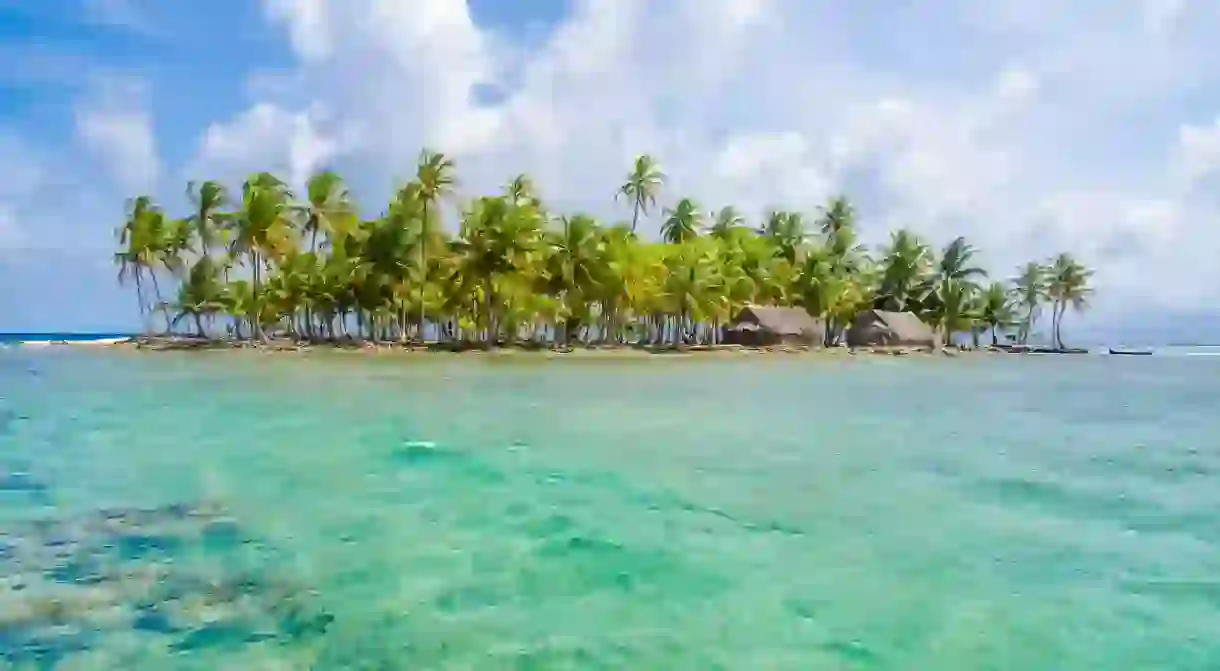What To Know Before Visiting the San Blas Islands, Panama

Panama’s beautiful coastlines and archipelagoes attract tourists in droves, but those looking for a more secluded experience will find what they’re looking for on the San Blas Islands. Whether you’re day-tripping or gearing up for a three-day adventure discovering shipwrecks and starfish-studded beaches, Culture Trip’s guide to the region provides you with the basic information you need for the perfect desert island getaway.
The San Blas archipelago consists of over 300 cays and islands scattered parallel to the northern coast of Panama – only a fifth of which are inhabited. An hour away from the mainland, the network of islands is home to pristine landscapes, diverse ecosystems and communities of indigenous people who host visitors keen to get a taste of island life without the bells and whistles associated with luxury resorts.

Depending on whether you’re planning on doing a day trip or are staying on the islands for a couple of nights, it’s important you do your research beforehand and ensure you have all the essentials. A day of exploring only requires the basics: sunscreen, snacks, a bottle of water and adequate beachwear. For an extended trip, however, you’ll have to factor in the realities of island living.

Spending time in the San Blas archipelago exposes you to a completely different side of Panama. If you get to know the hosts and their customs, keep an open mind and remain respectful of your surroundings, your stay in this part of the country will be an experience you’ll never forget.
Rare wildlife are part of everyday life
The lack of tourist presence in the relatively undiscovered region has allowed nature to flourish. Bulky yellow and orange starfish dominate the shores of Isla Estrella, Isla Perro Chico’s sunken gunboat offers a spectacular yet eerie snorkelling experience and, come nighttime, the billowing underwater clouds of bioluminescent plankton create a mesmerizing natural light show along the beaches north of Isla Banedup. As the locals say, each island has a story to tell.

The chance to preserve an old and often untouched ecosystem
One of the best things about visiting San Blas is having the chance to watch marine life in a natural habitat. Spontaneous encounters with starfish, dolphins and potentially even sea turtles are not uncommon, but it goes without saying that you shouldn’t touch or pick up any wildlife you come across. Panama has seen a sharp decline in the number of starfish inhabiting its shores in recent years, particularly in the Bocas del Toro province. Sadly, one of the main factors thought to have caused this is tourist behavior. Admire all wildlife from a respectful distance, and take satisfaction in knowing you’re playing your part in conserving the area’s ecosystem.

An autonomous community with its own island laws
The San Blas Islands fall under the indigenous comarca (region) of Guna Yala. Although part of Panama, this territory is one of five overseen and controlled by different indigenous peoples. These comarcas are not governed by Panamanian authorities, and therefore have their own set of rules. While there’s no consensus on the exact date the Guna (or Kuna) people first inhabited the islands, indigenous stories state that they arrived in the 16th century, fleeing the mainland after wars with other tribes.

True immersion in the form of homestays
Depending on where you stay in San Blas, the Guna will likely be your hosts, providing hearty meals, feasts of freshly caught crab and lobster, and transportation to the other islands, as well as plenty of information on the local flora and fauna. The Guna are immensely proud of their identity; you’ll probably notice their distinctive flags – which feature an inverted swastika, an ancient symbol of creation in Guna culture – adorning vehicles or boats within their territory. If you visit during the month of February, you’ll notice these flags are especially prevalent; this month marks the date of the 1925 Dule Revolution, a successful revolt that led to Panama giving the Guna people autonomy. Displaying the flag is seen as a sign of great respect.
Bring your water with you
While many islands have a kiosk dedicated to selling souvenirs, soft drinks and alcohol, it’s highly recommended that you bring your own supply of drinkable water – enough to last for the duration of your stay. Most arranged transport from Panama City to the ports of Guna Yala includes a stop at a supermarket, so stock up on a couple of 5L bottles and use them to refill smaller ones. It’s also worth investing in a wet bag; spending your days between sand and sea inevitably means your luggage – including valuables and electronics – will constantly be exposed to the elements, so avoid any mishaps and use it to store your prized possessions.

Keep cash in small bills
It’s important to note that because Guna Yala is an autonomous region, you’ll have to pay an entry fee of approximately US$50. Although you’ll be doing minimal spending on the islands, make sure you also set aside a lot of smaller notes for this trip; the Guna islanders only accept US$20 bills or less.
Go really far off the grid
Lastly, life on the islands means that staying connected to the outside world may not be possible. Mobile network signals are weak, and while there are a couple of Wi-Fi hotspots, their effectiveness greatly depends on whether or not there is enough electricity to spare. Going off the grid may be daunting for some, but take it as an opportunity to have a distraction-free break. Just make sure to keep loved ones informed that you’ll be hard to reach for a few days to avoid potential worry.













